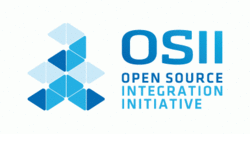System integration
The research group System Integration deals with possibilities to network information systems with each other on a technical level and to relate the contents of the different systems.
The integration considers users (single sign-on, user profiles, expertise, …), content (search, content types, semantic metadata, …) and business processes (activities in workflows, activity streams, tasks, …) as well as all levels of the information systems (infrastructure, functional integration via web services, user interface). Preference is given to working with open-source software.
A wide range of application areas is covered, from Smart Office to Smart Home to Smart Factory.



In the Smart Office area, the focus is on efficient support for employees in companies working on knowledge-intensive activities. An Enterprise Knowledge Infrastructure (ECI) is a platform in which the typical information systems of a company, from document management and wikis to groupware and portals, are interlinked in such a way that an integrated landscape is created, as has been the case with ERP systems for years. Adaptive Case Management (ACM), Business Process Management, Activity Mining in Enterprise Social Networks, Enterprise Search and Single-Sign-On serve as the technical basis for integration. The goal is to develop solutions that can run on premise and in the cloud and can be quickly and easily adapted to the needs of companies (low code customizing by Citizen Developer).
In the Smart Home area, the focus is on the intuitive user interface (Natural User Interface). Here, new input options and forms of interaction such as voice control and chatbots, or controllers for virtual reality applications are being investigated and prototypes are being built that solve individual aspects better than commercially available systems. Interoperability of smart home components and protocols, the visualization of data in the smart home and the rapid creation of high-quality content for VR/AR applications are further aspects under consideration.
In the Smart Factory area, the focus is on the digital manufacturing workplace. Companies with a low level of digitalization in manufacturing should be enabled to take a big step towards the smart factory with little effort and to make the entire manufacturing process transparent via digitally mapped processes, so that advanced solutions such as predictive maintenance or automatic parameterization of machines can then be introduced selectively to improve process quality. For this, machine data must also be understood in terms of content and translated to known patterns. The goal is a solution that is highly modular (microservice architecture), integrates as well as possible into the existing IT infrastructure (non-intrusive) and comes with typical use cases and evaluations prefabricated but easily adaptable.
In all use cases, fast implementation, easy adaptability, appropriate user interfaces and semantic interoperability are important.
 DE
DE EN
EN